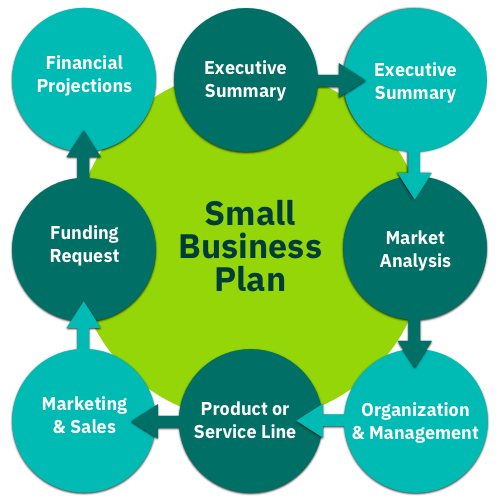Expanding into a new market represents a significant opportunity for businesses aiming to grow their customer base and increase revenue. A well-executed market entry strategy is essential for achieving success while minimising risks. A thorough understanding of the target market, a unique value proposition, and a carefully crafted approach that aligns with local needs and preferences are at the heart of any successful expansion.
Understanding the Importance of a Market Entry Strategy

Breaking into a new market is not merely about replicating existing operations; it requires a tailored approach that considers the region’s unique dynamics. A strong market entry strategy ensures businesses can navigate local regulations, adapt to cultural nuances, and effectively position their products or services. With this, even the most established companies can avoid failure.
Critical Elements of a Winning Market Entry Strategy
Comprehensive Market Research
Businesses must gather in-depth insights about their target market to build a strong foundation. Market research involves analysing consumer behaviour, industry trends, competitive landscapes, and potential barriers to entry. Key areas to investigate include:
- Market size and demand: Understanding whether the market is large enough to sustain long-term operations.
- Cultural preferences: Tailoring products or services to meet local tastes and expectations.
- Competitive analysis: Identifying key players and learning from their successes and challenges.
Clear Value Proposition
A compelling value proposition is crucial to standing out in a competitive market. This requires businesses to articulate what makes their product or service unique, how it solves local challenges, and why customers should choose it over competitors.
Regulatory and Legal Compliance
Navigating a new market’s legal and regulatory framework is often one of the most complex entry aspects. Businesses need to:
- Ensure compliance with tax laws, import/export regulations, and labour laws.
- Obtain the necessary licenses and permits to operate legally.
- Stay informed about any political or economic risks that could affect operations.
Strategic Partnerships
Collaborating with local partners can significantly enhance market entry efforts. Partnerships with distributors, suppliers, or marketing agencies can provide valuable insights and resources to establish a strong presence.
Developing an Effective Entry Plan

Assess Entry Modes
There are several ways to enter a new market, each with advantages and challenges. Businesses should evaluate the following options:
- Direct Exporting: Ideal for businesses seeking to maintain control over their products but with minimal local presence.
- Joint Ventures: Partnering with local firms can offer shared resources and reduced risks.
- Franchising: Useful for replicating successful models while leveraging local expertise.
- Greenfield Investments: Establishing new operations from the ground up, suited for businesses with substantial resources.
Establish Local Operations
Setting up local operations requires careful planning. This includes:
- Recruiting and training a local team: Hiring professionals familiar with local market nuances can enhance operational efficiency.
- Building a robust supply chain: Establishing reliable procurement, manufacturing, and distribution networks is crucial.
Implement a Tailored Marketing Strategy
To gain traction, businesses must deploy targeted marketing efforts that resonate with the local audience.
- Digital campaigns: Leveraging social media, search engine optimisation (SEO), and pay-per-click advertising to increase brand visibility.
- Localised content: Crafting messages and promotional materials in the local language and cultural context.
- Community engagement: Sponsoring events or collaborating with local influencers to build trust and credibility.
Monitor and Adapt
The first months of market entry are critical. Continuous monitoring of performance metrics—such as sales growth, customer feedback, and competitor actions—is necessary to adapt strategies. Businesses should remain agile and ready to pivot based on real-time data.
Common Challenges and How to Overcome Them
While entering a new market presents exciting opportunities, it also comes with challenges. Businesses must be proactive in addressing these potential hurdles:
- Cultural Barriers: Misunderstandings about local customs or consumer preferences can hinder success. Cultural training for teams and collaboration with local experts can mitigate this risk.
- Economic Instability: Changes in currency exchange rates or inflation can affect profitability. Diversifying revenue streams and hedging financial risks are essential measures.
- Intense Competition: Entering a crowded market requires differentiation and a strong value proposition.
Case Study: Successful Market Entry in Action

To illustrate the principles outlined above, consider the example of a global technology company expanding into Southeast Asia. The company conducted detailed market research and identified a growing demand for affordable smartphones. They partnered with local retailers, launched a targeted digital marketing campaign in regional languages, and adapted their product to include features prevalent in the region, such as dual-SIM capabilities. The company captured a significant market share within two years and built a loyal customer base.
Conclusion: Setting the Stage for Long-Term Success
Crafting a winning market entry strategy requires thorough research, strategic planning, and adaptability. Businesses that take the time to understand their target markets, leverage local expertise, and execute tailored strategies are well-positioned to succeed. By building trust and delivering value, companies can establish a strong foothold in new markets and drive sustainable growth.












